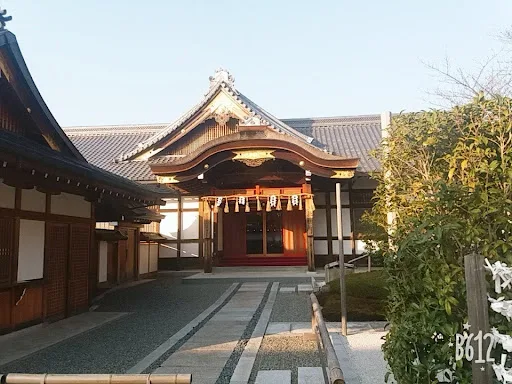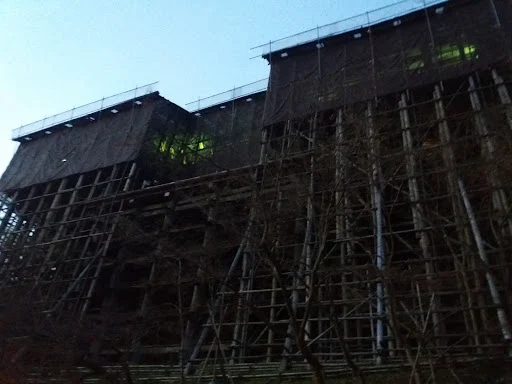Thanks to the kindness of some helpful locals, I was able to navigate Japan’s famously complex subway system and finally arrived in Kyoto.
Because I overslept, I got there later than planned, so I quickly prioritized my schedule—and the first place I headed to was Fushimi Inari Shrine.
As I approached the entrance, two towering torii gates greeted me like they had been waiting all along.
나는 친절한 일본인들의 도움을 받아 복잡한 일본 지하철을 통과해 교토까지 도착하였다.
늦잠 자는 바람에 계획보다 교토를 늦게 도착했다.
그래서 나는 빠르게 우선순위를 정하였고 첫 번로 후시미 이나리 신사를 갔다.
이나리 신사 입구에 오면 커다란 도리이 두개가 나를 반겨준다.
Right in front of the gates, there were small stalls selling light snacks and drinks, perfect for a quick bite before heading in.
As I walked further inside, vibrant and majestic buildings began to appear
도리이 앞에는 간단한 간식을 사먹을 수 있는 상점들이 있다.
조금 더 안으로 들어가면 화려한 건물들이 있다.
조금 더 안으로 들어가면 화려한 건물들이 있다.
As you walk around the shrine, you’ll come across a place where you can draw your fortune, known as omikuji.
If the fortune written on the paper is good, people usually keep it. But if it's bad, they tie it to a rack to leave the bad luck behind.
If the fortune written on the paper is good, people usually keep it. But if it's bad, they tie it to a rack to leave the bad luck behind.
둘러보다 보면 운세를 뽑을 수 있는 오미쿠지라는 곳이 있는데 종이에 적힌 운세가 좋으면 가져가고 안 좋으면 이곳에 묶어, 여기에 악운을 버리고 간다고 한다.
This shrine is said to have over ten thousand torii gates lining the mountain path.
The countless vermilion gates stretching through the forest create a mystical.
이 신사에는 산을 따라 도리이가 만여개 있다고한다.
산속의 많은 도리이가 분위기를 신비롭게 만들어준다.
If you look closely, you’ll notice that many of the torii have Chinese characters engraved on them.
These are the names of the donors who funded the gates, as a form of offering and gratitude.
도리이 기둥을 가까이 보면 한자가 적혀 있는데 이것은 이 기둥의 후원자라고 한다.
그들의 헌금과 감사의 마음을 나타내는 표시라고 한다.
Still, I made a promise to myself that I’ll come back to Kyoto again someday and reach the top.
Even on the way down, there were so many things to see.
나는 정상까지 올라가고 싶었지만 2시간이 걸린다고 하여 산 중턱에서 하산하기로 결정하였다.
다음에 교토를 한 번 더 와서 정상을 찍어야겠다는 다짐을 했다.
하산길에도 볼 것이 엄청 많았다.
In front of the prayer hall, there’s a small wooden offering box—it’s where you drop a coin when making a wish or prayer.
기도하는 곳 앞에 작은 상자는 기도할 때 동전을 넣는 곳 이라고 한다.I decided to head to my next destination, Kiyomizudera, also known as the “Temple of Pure Water.”
On the way to Kiyomizudera, there are two famous sloping streets called Sannen-zaka and Ninen-zaka.
Walking along these paths, you’ll find traditional Japanese shops lining the streets, creating a charming atmosphere that’s perfect for a leisurely stroll and sightseeing.
On the way to Kiyomizudera, there are two famous sloping streets called Sannen-zaka and Ninen-zaka.
Walking along these paths, you’ll find traditional Japanese shops lining the streets, creating a charming atmosphere that’s perfect for a leisurely stroll and sightseeing.
나는 다음 목적지로 기요미즈데라 "청수사"를 가기로 하였다.
청수사로 가는 길목에는 ‘산넨자카(三年坂)’, ‘닌넨자카(二年坂)’라 불리는 언덕길이 있습니다.
이 길을 따라 걷다 보면 전통적인 분위기를 간직한 일본 상점가들이 이어져 산책하듯 구경하며 둘러보기 좋다.
이 길을 따라 걷다 보면 전통적인 분위기를 간직한 일본 상점가들이 이어져 산책하듯 구경하며 둘러보기 좋다.
At one of the shops, I bought a cup decorated with an illustration of Kiyomizudera.
After passing through the quaint alleyways, I finally arrived at the temple.
The name “Kiyomizudera” literally means “temple of clear water.”
After passing through the quaint alleyways, I finally arrived at the temple.
The name “Kiyomizudera” literally means “temple of clear water.”
나는 저 상점가에서 청수사가 그려진 컵 하나를 구매하였다.
나는 그 길을 따라 걷다보니 청수사에 도착하였다.
청수사의 뜻은 말 그대로 물이 맑은 절이다.
I paid the entrance fee and went inside to explore.
Although the main hall was under renovation when I visited, there was still plenty to see.
Although the main hall was under renovation when I visited, there was still plenty to see.
나는 입장료를 지불하고 안으로 들어가 구경을 하였다.
내가 갔을 때는 본당이 수리하고 있었지만 볼 것이 정말 많았다.
If you walk past the main hall and head to the right, you’ll reach a spot where you can overlook the city of Kyoto.
저 지붕이 넓은 곳이 본당인데 못을 쓰지 않았다고 한다.
본당을 지나 오른쪽으로 쭉 걸어오면 교토 시내를 내려다볼 수 있는 곳이 나온다.
저 멀리 교토 타워도 보인다.
Lastly, there is the most popular spot in Kiyomizudera—the Otowa Waterfall.
The waterfall has three streams, each symbolizing academic success, love, and longevity.
The waterfall has three streams, each symbolizing academic success, love, and longevity.
Behind the waterfall, there are ladles made of metal where visitors can catch water from their desired stream and drink it, believing it will grant their wishes.
However, you're only supposed to drink from a maximum of two streams—if you drink from all three, it's said to bring bad luck instead.
This spot is extremely popular, so for those short on time, I recommend visiting here first.
However, you're only supposed to drink from a maximum of two streams—if you drink from all three, it's said to bring bad luck instead.
This spot is extremely popular, so for those short on time, I recommend visiting here first.
마지막으로 청수사의 가장 인기 있는 오토와 폭포가 있다.
이곳의 물줄기는 세 개인데 각각 학업 성취, 연애, 장수를 뜻한다.
뒤쪽에 준비되어있는 쇠 국자로 원하는 물줄기로 가서 물을 받아 마시면 소원이 이루어진다는 설이 있다.
하지만 물은 최대 두 줄기만 마셔야 하고 세 줄기 다 마시면 오히려 운수가 나빠진다고 한다.
이곳이 제일 인기가 많아 바쁜 분들은 이곳부터 가는 것을 추천드린다.
It felt like a place where tradition is still alive.
There wasn’t enough time to see all of Kyoto in one day,
so I recommend spending at least one night and two days to fully experience the city.
교토는 어딘가 모르게 한국의 경주와 비슷한 느낌을 풍겼다.
전통이 살아있는 듯한 분위기를 느꼈기 때문이다.
교토를 하루에 다 보기에는 시간이 너무 부족했다.
그래서 교토를 제대로 느끼기 위해서는 당일치기보다 1박 2일을 추천한다.
P.S.
Places I wanted to visit but couldn’t because of time constraints:
내가 가보고 싶었지만 시간이 없어서 가지 못한 곳들
Kinkaku-ji (The Golden Pavilion)
킨카쿠지 (금각사)
언젠가 다시 한번 교토를 꼭 가서 이 아쉬움을 풀 것이다.
Tags:
Japan(일본)
































